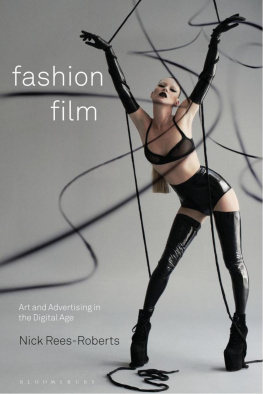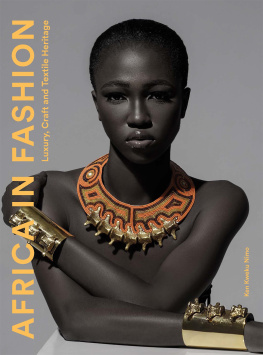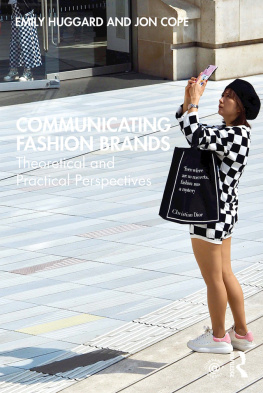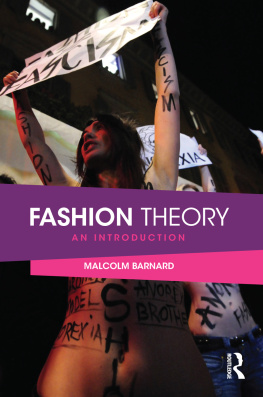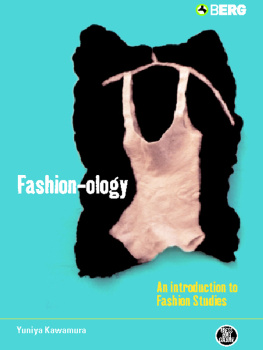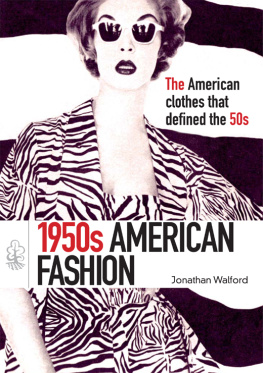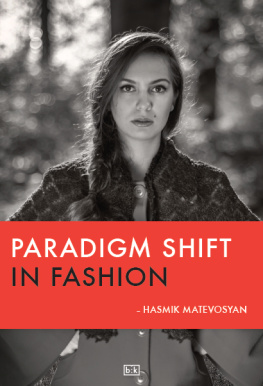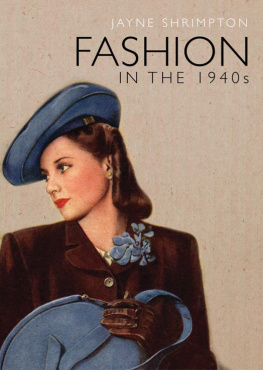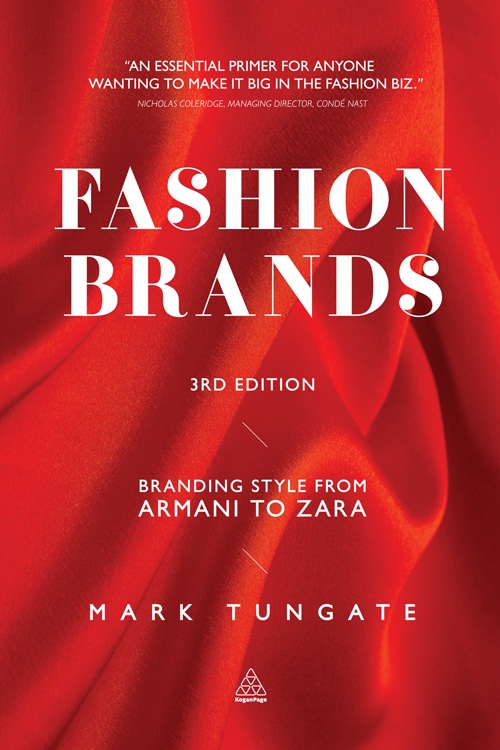Note on the Ebook Edition For an optimal reading experience, please view large
tables and figures in landscape mode. |
This ebook published in 2012 by
Kogan Page Limited
120 Pentonville Road
London N1 9JN
UK
www.koganpage.com
Mark Tungate, 2005, 2008, 2012
E-ISBN 978 0 7494 6447 9
For my sister, whose fashion icons are
Audrey Hepburn and The Ramones
and who somehow manages to combine the two.
CONTENTS
PREFACE TO
THE THIRD EDITION
The writer, the book and the wardrobe.
I never expected Fashion Brands to reach three editions.
For me, it was a piece of journalism, a snapshot of an industry at a certain period. It was also an exploration of a business I knew very little about at the time. The original idea was to plunge into Paris my new home, a city I was overjoyed to find myself living in but only just starting to discover and find out why it considered itself the capital of fashion.
Little did I know that my quest would take me to Milan, New York, Hong Kong and back to London. Nor did I know that I would be asked to revisit the text, not once, but twice.
I wont pretend that I found it easy. Writing a book is a long, stressful, exhausting business. The hero of Stephen Kings Misery always lights a cigarette when hes finished a manuscript. Personally, I always feel like closing the blinds and sleeping for about a week.
You may think me pretentious for comparing myself to an author of fiction. But I cant help thinking of my books as stories, with descriptions, intriguing characters and a sort of narrative. In a conventional story, the central character emerges from his experiences changed in some way. When I write my books, that person is usually me.
The first edition of Fashion Brands was a success in its own modest way, and it changed my life. It led to freelance work with WGSN, the trend forecasting company. Brands sought me out for advice and copywriting jobs. Students wrote to me asking for help with their theses. I was invited to speak at conferences and universities.
And of course it led to four subsequent books. My career since my early 30s has been shaped in part by Fashion Brands . Which is why it always feels odd to go back to it. For one thing theres the tone of the book: tentative, slightly nave, somewhat apologetic. Today Im almost part of the fashion business or at least, I have more legitimacy in the field than I did back then. No doubt Id adopt a more knowing posture now. Which would be a shame, because I think the reason students enjoy this book so much is that I sound a lot like them.
But there you have it: the book is still popular and the editor wants an update. You dont update novels; you cant update journalism; but apparently its ok to update a book about fashion.
So how to go about the task? Some of you may feel that I should have simply rewritten the whole book. But then it wouldnt be this book, it would be another one. There were practical considerations, too: the leading names in fashion are hardly the most accessible beings on earth; I couldnt see myself calling all of them to ask if I could re-interview them. So my favourite quotes are still here, intact and largely unedited.
I also found that, despite the books very last sentence, many aspects of fashion branding remained unchanged. Its need to create fantasy worlds, its reliance on celebrities, its ability to stimulate demand by manufacturing trends, even its preference for glossy magazines over alternative media.
There were new matters to address, however. At the time of the first edition there was no Facebook, or Twitter or iPhone or iPad. I also wanted to talk about the increasing importance of childrens fashion, something Ive grown acutely aware of since becoming a father a year ago. In the end, I came up with what seemed to be the ideal approach. I decided to treat the book like a wardrobe.
I threw out certain items that were far too moth-eaten or out of date to be seen again. I kept what I considered to be timeless pieces, or those that had aged reasonably well. And I went out and replenished the whole with a few sprightly new additions.
Ill admit the result is something of a patchwork: more of an eccentric, curated collection than a work of sleek modernity. But I like to think that it is still relevant. And whats more, its still the original book, the one I finished with a sigh very late one night, wondering if it would be of any help to anyone.
Turned out, it was. I hope it still is.
You dont buy clothes you buy an identity.
T he model struts towards the battery of cameras, profile held slightly aloft, walking with the curious avian gait that has evolved to flatter the lines of her dress. She does not spare a glance for us mere mortals in the wings; her attention is utterly focused on the arsenal of lenses at the end of the catwalk, which will whirl her image into the global maelstrom of the media barely an instant after she has turned away.
She pauses at the end of her purposeful march, a thigh thrust forward, a hand on a jutting hip, smiling at last as the flashes crackle around her like summer lightning. When she has given her audience what they came for, she swivels imperiously, flinging a contemptuous vestige of inaccessibility in their direction, before marching just as determinedly back to the oxygen-starved planet where only models, fashion designers and billionaires live.
For many consumers, the models short stroll is the first image that springs to mind at the mention of the word fashion. The runway show with its combination of creativity, glamour and artifice is one of the elements that drive us, again and again, to buy clothes we dont really need. Its difficult to think of an industry that does not have recourse to marketing in one form or another, but only fashion has such an overbearing reliance on it. When clothes leave the factories where they are made, they are merely garments or apparel. Only when the marketers get hold of them do they magically become fashion.
There is nothing trivial about fashion. Although there is little consensus on the figure, it is estimated that the amount spent on clothing, footwear and accessories around the world tops US$1 trillion a year. According to Bain & Company, the global luxury goods market is currently worth US$240 billion. Fashion and leather goods account for a large proportion of the sector, alongside perfumes and cosmetics sold under the licensed names of fashion designers. Watches and jewellery take care of the rest. This vast, resilient industry is driven by a number of highly sophisticated marketing and branding techniques, which are well worth dissecting.
And it would be foolish of us to underestimate the importance of fashion in society. Clothes and accessories are expressions of how we feel, how we see ourselves and how we wish to be treated by others. During my interview with the fashion photographer Vincent Peters (who has taken pictures of some of the most gorgeous people in the world, wearing some of the most expensive clothes), he said, Fashion is too prevalent to be considered trivial. Even when you say youre not interested in fashion, youve been forced to confront it. Fashion is everywhere. What you choose to wear or not to wear has become a political statement. You dont buy clothes you buy an identity .
This identity is linked to brand values that have been communicated via marketing. Are you elegant, flighty, debonair, streetwise, intellectual, sexy or all of the above, depending on your mood? Dont worry: weve got the outfit to match.



